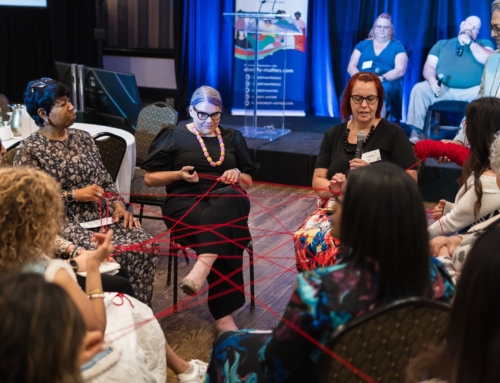Understanding the New World of Virtual & Hybrid Fundraising Events
The last few months have taken the world of events by storm, with some of us bravely adopting for virtual events during lockdown. As restrictions are slowly eased and we start planning to re-open, many are talking about hosting hybrid events going forward.
But what does that event mean and how do you produce a hybrid event exactly?
We answer some common questions to help bring you up to speed.
What is a hybrid event?
A hybrid event is exactly as it sounds, it is a combination of an in-person and virtual experience. There are two channels to the event that includes two audiences: onsite at the venue, and remotely online. The key to successful hybrid events, however, is the engagement between guests. Providing opportunities for your remote audience to interact and participate at the event and with the onsite guests will ensure no one feels like they are getting the short end of the stick. The audience should be able to participate and engage in the event equally, no matter where they are.
Remember, we are entering a new era following a pandemic and while some people are bursting at the seams to gather again, others will need more time to adjust and raise their confidence levels. Hybrid events enable us to safely gather onsite while providing an alternative option for those who want to participate from home. Furthermore, virtual events during lockdown helped many to expand their reach and audience size, so it’s definitely worth maintaining this wider reach to keep everyone engaged and interested.
How can I keep sponsors engaged in a virtual or hybrid event?
It’s important to understand that the virtual component to hybrid events isn’t just a simple video call – it’s a full-blown virtual experience. This means it is full of possibilities to engage sponsors and donors like never before. Consider offering opportunities for brand recognition and acknowledgments during the program and get really creative with sponsored content online and onsite. Despite the current climate, you will be surprised at the level of interest in supporting events in these new formats which have helped brands expand their reach and engage with both online and on-site audiences with detailed statistics.
Data analytics and reporting is gold dust when it comes to sponsorship and if you are reaching record high numbers in audience and engagement, share the stats with potential brands and be sure to include this information in your benefits package.
The best part is: hybrid and virtual events can actually offer more personalized options for sponsors to suit their specific needs. Not to mention, the overall convenience of managing virtual exhibit booths and engagement with attendees, remotely.
That said, there’s no reason why you should skip the traditional swag bags just because your event is virtual or hybrid. Consider mailing out sponsored goodie bags in advance of the event, with some treats to enjoy during the show. Or why not opt for virtual goodie bags? They can include digital coupons, free subscriptions, gift cards, virtual backgrounds and so much more.
Also, allow event sponsors to pitch their products and services during the breaks so that they can make their presence felt. It may seem like a no-brainer, but it’s also worth remembering that this is a tech-enabled event so there is always the potential for something to go wrong, be sure to have sponsor commercials and material on standby for any snags or delays.
Finally, make your sponsors worth remembering by incorporating their brand and name in fun activities. A virtual game like a basic puzzle or scavenger hunt with sponsored names and products can inject so much fun while adding incredible value to the sponsorship.
The good thing is many brands are becoming more and more familiar with virtual and hybrid event formats and therefore know what to expect. The question is: are you prepared for this ‘new normal’ to stay ahead of the game?
How do you price an online event sponsorship?
Set your revenue goals before getting into the fine details of pricing. If you are producing an annual fundraiser, try to beat your previous year’s collections and determine clear targets.
The key to establishing pricing and securing virtual and hybrid event sponsors is by showcasing the overall value the event has to offer and the quality of interactivity with your audience. Healthy stats and data, as mentioned earlier will really help boost the value of your event and therefore provide opportunities to charge a premium for sponsorship.
Branding opportunities are the same at virtual and in-person events but in the case of hybrid, it’s doubled. This is because sponsors have the opportunity to engage with both in-person and online audiences. This again adds incredible value to the sponsorship.
The traditional tiered sponsorship grid is still relevant here and works really well when applied to both virtual and hybrid models. Just remember to get creative and tailor packages to meet the specific needs of your sponsors and always highlight the overall value by listing the available features for both online and onsite opportunities.
Will it cost more to produce a hybrid event?
It depends. That’s the honest answer.
Yes, you can end up planning and spending on what appears to be two events; however, it’s important to think about all the requirements for your event and the necessary activities that need to take place on-site (including the number of guests and catering etc.) vs the features and interactivity requirements online.
Think about the overall purpose of the event and what your audience is expecting in terms of outcome. This will help filter between the overall scope of what is essential and what is considered a “nice-to-have.”
With various platforms and streaming options available, there are solutions for all types of events that work with various budgets. Allow yourself time to explore the options to make informed decisions about each component that will make up the moving parts of your hybrid experience.
Where do you begin to plan a hybrid event?
Take time to consider your event strategy and select an approach that will work best for your target audience. Determine the ‘what’, ‘where’, ‘when’ and ‘how’ of the event.
It’s important to understand the overall objective of your event, your demographic and what they like and dislike as well as how motivated they will be to participate online. Also think about the content you plan to deliver. It’s easier to hold attention of guests in-person but a little more challenging online, so keep virtual content short and digestible.
Also, consider where the in-person event will take place and whether or not the same content needs to be shared online at the exact same time. Hybrid allows guests to make the most of the content when and where it suits them – not to mention the convenience of access on-demand.
You also want to pinpoint where your remote audience will be tuning in from. This will help determine the most suitable time for your event across related time zones.
Finally, think about how you want the audience to consume your content. Live programming can be streamed in real-time but you can also make the most of simulive (pre-recorded and streamed live at a scheduled time) and on-demand content as well. There are various possibilities to help develop the ideal program for your audience.
Remember, virtual and hybrid events provide an opportunity to deliver high-quality and engaging content and are truly successful when you focus on boosting engagement and interactivity amongst your guests.
Good luck and happy planning!
This post was written for Association of Fundraising Professionals Toronto






